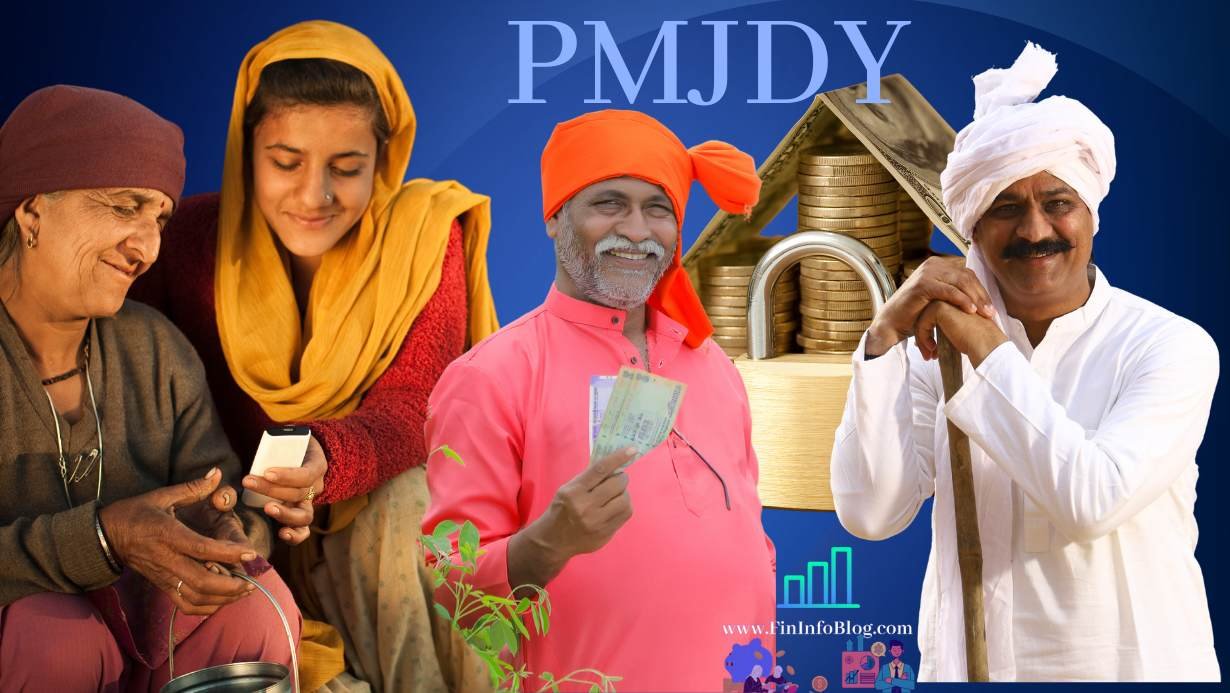PMJDY: PRADHAN MANTRI JAN DHAN YOJNA
Financial inclusion has long been a critical issue in India, a country with impressive economic growth but persistent pockets of poverty and exclusion. The Pradhan Mantri Jan Dhan Yojana (PMJDY) is a national mission launched to address this challenge and bring all households into the formal financial system. In this article, we delve into the objectives, implementation, challenges, and impact of PMJDY, which aims to empower the weaker sections of society, provide universal access to banking facilities, and leverage technology for inclusive growth.
PMJDY : Mission on Financial Inclusion
The Pradhan Mantri Jan Dhan Yojana is a comprehensive National Mission on Financial Inclusion initiated by the government of India. Its primary goal is to provide easy and universal access to financial services for all households in the country. The mission encompasses various aspects of financial inclusion, including opening bank accounts, providing debit cards, facilitating access to credit, insurance, and pension services.
Government’s Priority on PMJDY
Financial inclusion is not merely an economic strategy; it’s

a national priority for inclusive growth. By bringing the poor into the formal financial system, PMJDY offers avenues for remittances and savings. Despite over six decades of independence, less than two-thirds of Indian households had access to banking facilities. PMJDY was launched to change this, with a focus on empowering weaker sections of society, including women, small and marginal farmers, and laborers.
Universal Access to Banking Facilities by Account Opining under PMJDY
One of the core objectives of PMJDY is to ensure that every household in India has at least one basic banking account. This initiative is aimed at improving financial literacy and promoting the use of digital money. Beneficiaries are provided with RuPay debit cards, which include accident insurance cover of ₹1 lakh. Moreover, the mission supports the Direct Benefits Transfer (DBT) scheme, streamlining subsidy distribution through beneficiaries’ accounts.
Role of Technology
Technology plays a pivotal role in achieving financial inclusion. PMJDY utilizes technology to address challenges such as poor connectivity and to enable online transactions. The mission is actively promoting mobile transactions through telecom operators and the establishment of cash-out points, especially in areas where banking infrastructure is limited.
Implementation PMJDY in Mission Mode
PMJDY is being implemented as a mission, complete with a web-based monitoring tool. Key focus areas include expanding the banking network, opening basic savings accounts, increasing financial literacy, and establishing credit guarantee funds, micro-insurance, and pension schemes for the unorganized sector.
Challenges and Stakeholders
While the mission is ambitious, it’s not without its challenges. Telecom connectivity in remote areas, brand awareness, and the remuneration of Bank Mitrs (Business Correspondents) are among the obstacles to overcome. However, the mission has the support of various stakeholders, including banking and financial institutions, private service providers, and, most importantly, the citizens.
Current Status of Financial Inclusion in India
As of now, significant progress has been made in extending financial services to underserved populations. Approximately 7.22 crore rural households out of 13.14 crore have been covered, leaving an estimated 6 crore rural households and 1.5 crore urban households yet to be included. The mission is actively working to set up banking outlets within a 5 km distance of every village, ensuring that even the most remote areas have access to financial services.
Branchless Banking for Financial Inclusion
PMJDY has shifted the approach from Swabhimaan, which had limited geographical coverage and offline account opening, to a more comprehensive approach. The focus is now on household coverage in both rural and urban areas. Business Correspondents act as representatives of banks, providing basic banking services. Inter-operability is achieved through RuPay Debit Cards, AEPS, mobile wallets, and USSD-based mobile banking.
Key Features of PMJDY
Launched on August 28, 2014, PMJDY is designed to bring all households into the financial system. Each account holder receives a RuPay debit card with accident cover, access to insurance, and pension products. The mission is driven by the belief that financial inclusion is a prerequisite for inclusive growth and empowerment.
Global Concern and Previous Efforts
Financial inclusion is not just an Indian concern; it’s a global issue. Countries like Sweden and France have legally required banks to open accounts for anyone who approaches them. In India, earlier efforts, such as the Rangarajan Committee report, emphasized financial inclusion as a means of empowerment. Large segments of the population, especially the underprivileged and lower-income groups, have long been deprived of basic financial services.
Challenges and Opportunities in India
Traditional banks have struggled to reach the poor with financial services, but India has strategic assets like a strong banking network, India Post outlets, a nationwide telecom network, and a national ID system. Enabling an inclusive competitive landscape is a priority, and the mission aims to leverage these assets.
Role of Technology in Financial Inclusion
Technology is at the heart of PMJDY’s success. It enables multi-channel branchless banking, electronic payment systems like RTGS, ECS, NEFT, and CTS, as well as e-KYC processes and mobile banking. The use of Aadhaar-enabled products like e-KYC, AEPS, Micro ATMs, and ABPS facilitates convenient and paperless transactions.
Monitoring and Implementation
The mission has a comprehensive monitoring and implementation structure involving various stakeholders. The administrative structure includes heads of major banks, the Reserve Bank of India (RBI) committee, and the National Bank for Agriculture and Rural Development (NABARD). Monitoring mechanisms include web portals, MIS reports, and regular ground surveys.
Conclusion
The Pradhan Mantri Jan Dhan Yojana is a significant step towards achieving comprehensive financial inclusion in India. By providing universal access to banking facilities, leveraging technology, and involving various stakeholders, the mission aims to empower millions and drive inclusive growth. While challenges remain, the progress made so far is promising, and PMJDY stands as a beacon of hope for a more financially inclusive India.
Linked of Video shared From PMJDY.GOV.IN
Readers may also like reading on PMSBY, APY and PMJJBY

2 thoughts on “PMJDY : Pradhan Mantri Jan Dhan Yojana: A Mission for Financial Inclusion in India 2024”